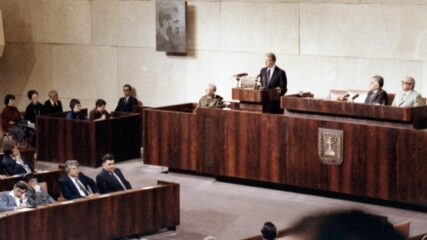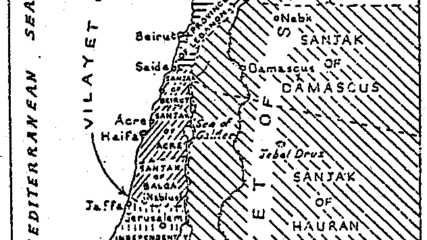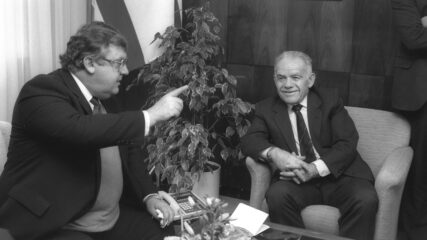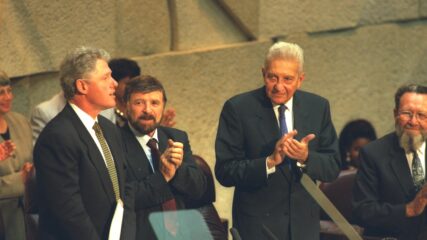April 4, 1968
Moshe Levinger and several other Israeli Jews pretending to be Swiss tourists check into a Hebron hotel to establish the first permanent Jewish presence in the city in almost 40 years, taking advantage of the city’s capture during the June 1967 war. The next day, they declare that they are not leaving the city, setting off a debate about Jewish efforts to repopulate the city.
Eventually, Israel decides to let the group live at an adjacent Israel Defense Forces base, which becomes the community of Kiryat Arba.
Hebron had an essentially uninterrupted Jewish presence for thousands of years until 1929, when the British evacuated the surviving Jewish population after the Arab massacre of 67 Jews on Aug. 23, 1929.
The April 4, 1968, arrival of settlers is the first step in re-establishing that Jewish presence. Levinger’s wife, Miriam, leads the resettlement of the Old Jewish Quarter in Hebron in 1979 when she and nine other women and 40 children sneak into the Beit Hadassah clinic and make it their home. After a terrorist attack in front of the building kills six yeshiva students in 1980, Prime Minister Menachem Begin’s government allows the expansion of Jewish settlement in Hebron.
Hebron is the scene of one of the worst incidents of Jewish terrorism against Arabs on Feb. 25, 1994, when Baruch Goldstein kills 29 Muslims worshipping at the Tomb of the Patriarchs and wounds 125 others.
As part of the Oslo Accords, the Palestinian Authority since 1997 has controlled 80% of the city, known as the H1 area, and Israel oversees the remaining 20%, known as H2. Roughly 200,000 people live in the Palestinian part of the city, compared with fewer than 1,000 in the Jewish section, which is protected by the IDF. In addition, more than 7,000 Israelis live in Kiryat Arba.










